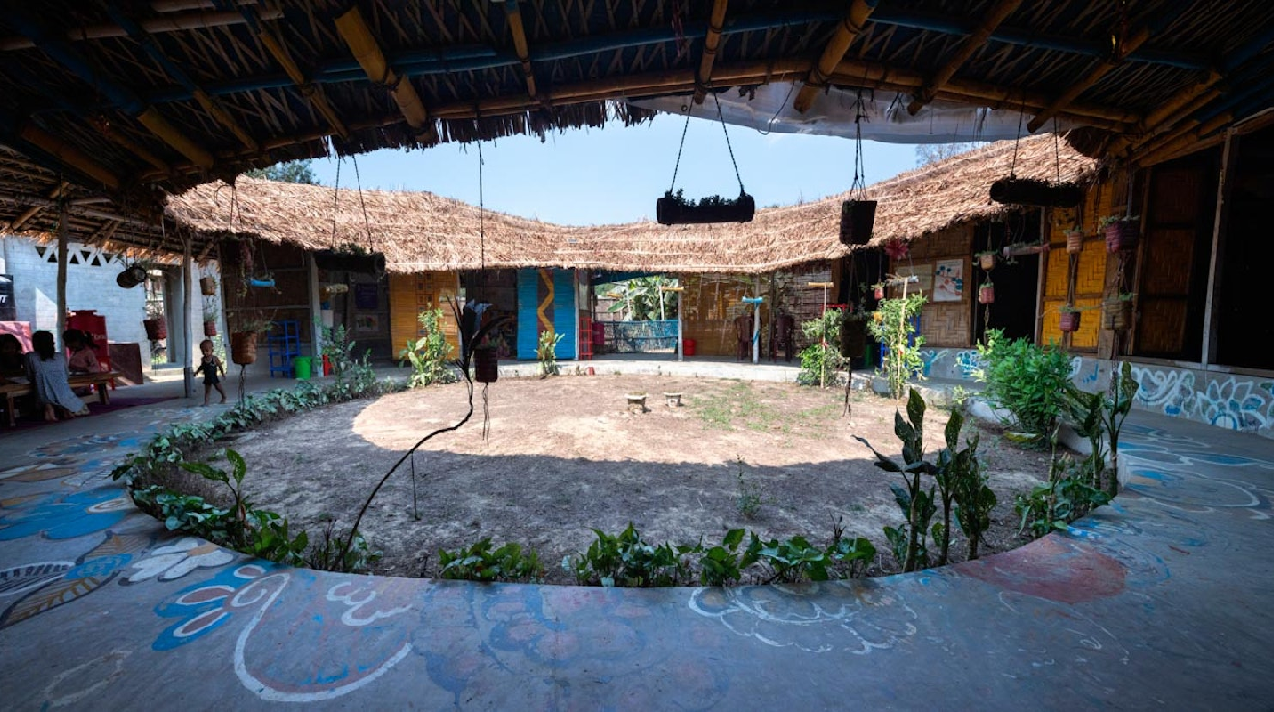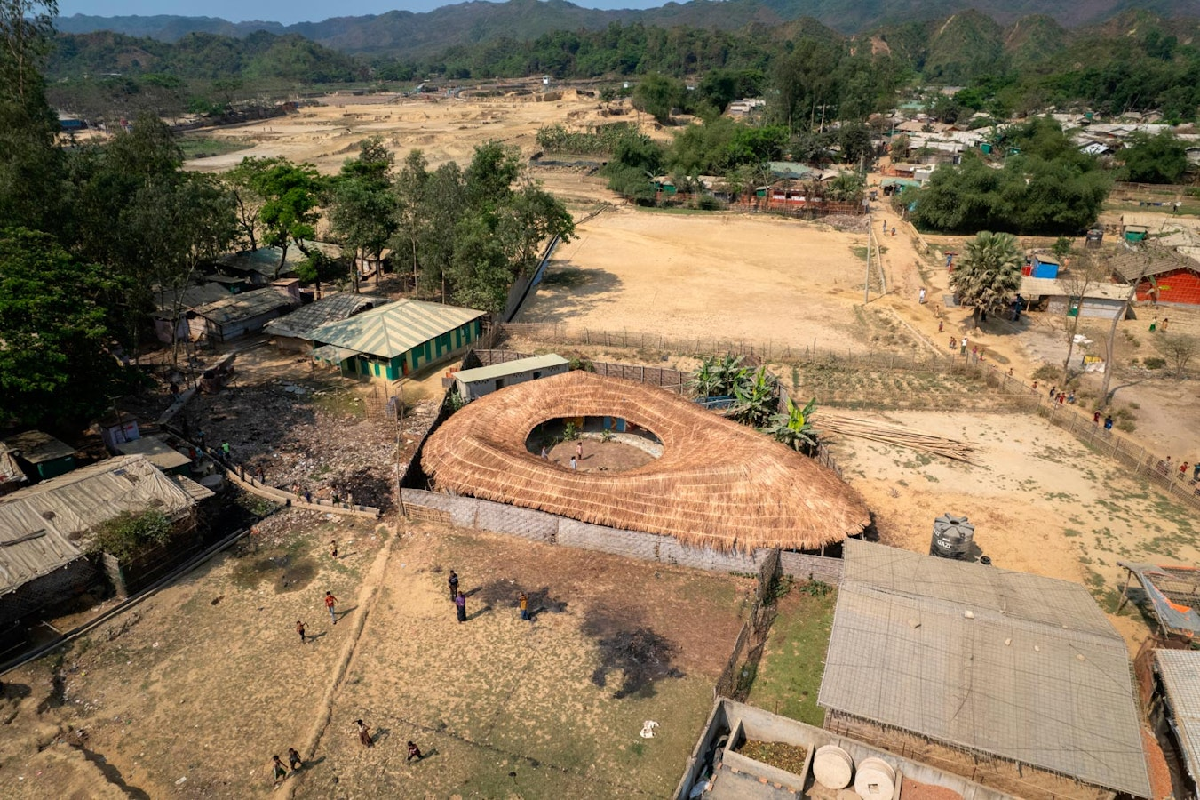Aga Khan Award for Architecture 2022 honors community spaces in the Rohingya refugee response
The spaces, an initiative of BRAC and ActionAid in Bangladesh, were designed by architects Khwaja Fatmi, Rizvi Hassan and Saad Ben Mostafa in close collaboration with Rohingya women and girls

DHAKA, BANGLADESH ― Community Spaces in the Rohingya Refugee Response is one of the six winners of the 2022 Aga Khan Award for Architecture, a program created through a partnership between BRAC and ActionAid to design dignified space for the Rohingya refugees based on their culture, craftsmanship and identity. Located in Cox’s Bazar, Bangladesh, which hosts the world’s largest refugee camps, the spaces are a collective of six sustainably built structures that evolved collaboratively in the field without drawings or models. The process was led by architects Khwaja Fatmi, Rizvi Hassan and Saad Ben Mostafa, working in close cooperation with women and girls of the Rohingya community.
The six spaces are part of a massive response to the forced displacement of almost one million Rohingyas from Myanmar to Bangladesh in August 2017. Displaced Rohingya people are living as refugees in makeshift shelters in Cox’s Bazar, where women and girls are particularly vulnerable.
Amid the congested shelters, women and girls needed community spaces where they could have access to support networks, strengthen social relationships, learn skills, and find peace. The collaboration and participation of the Rohingya women and girls who would use the structures was central to the design process.
The community spaces that evolved are female-friendly, low to the ground to withstand cyclones, and recognizable for their complex roof trusses built by Rohingya bamboo workers. The exteriors were designed to avoid disturbing visiting elephants.
The Aga Khan Award recognized the Community Spaces in the Rohingya Refugee Response as “an ingenious response to emergency needs related to the major influx of Rohingya refugees into Bangladeshi host communities, with particular attention to the safety of women and girls.”
The award’s master jury citation said: “The concept and design of the six spaces are the result of appropriate planning, solid partnerships and inclusive processes involving the diverse refugee and host communities, such as defining spatial and functional needs. The project’s implementation succeeded in adapting to various constraints (physical, social, regulatory, budgetary, climatic and environmental) and harsh working conditions, and harnessing the skills of workers and artists – women and men from refugee and host communities – for both construction and decoration, drawing from a variety of Rohingya and Bangladeshi construction techniques, spatial and architectural features, ways of life and aesthetic references.”

The design process began with a focus group discussion involving mostly Rohingya women and led by the architects. The women identified the needs the structures should meet – and how they could best be addressed. The spaces were constructed with locally available materials such as bamboo, straw, and tarpaulin. The building process was led mostly by Rohingya men, many of whom have expertise in woodwork and building with bamboo. Rohingya girls and women led the interior decoration process, covering the spaces with vibrant artwork and colours that continue to be expanded by other girls and women using the space.
The Aga Khan Award for Architecture is given every three years to projects that set new standards of excellence in architecture, planning practices, historic preservation and landscape architecture. The Award seeks to identify and encourage building concepts that successfully address the needs and aspirations of societies across the world, in which Muslims have a significant presence.
Media contact
For US press inquiries, please contact Elizabeth Wright, Director of Communications, BRAC USA: [email protected].